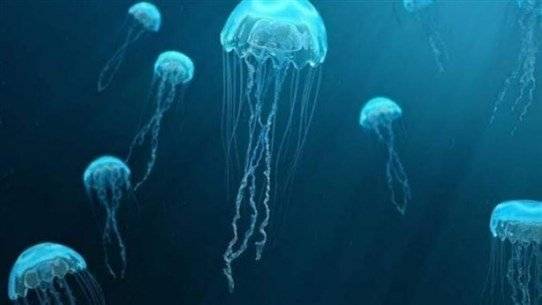A video circulating on social media showing a "invasion" of jellyfish on the Mediterranean coast has raised alarms, as these creatures can harm humans if approached. The news has dominated screens, with these jellyfish described as "stingy, headless creatures, with their numbers estimated in the millions."
In this context, Dr. Milad Fakhry, the director of the National Center for Marine Sciences at the National Council for Scientific Research, explains that the presence of jellyfish in the sea is natural during this period, particularly between July and August, as they cycle and travel through the Pacific Ocean, the Red Sea, and the Suez Canal, passing through occupied Palestine before reaching Lebanon. They then move on to Greece and Cyprus, and from mid-August, we will witness a decrease in their numbers.
In an interview with MTV, he noted, "Lebanon has seen such a large number because of the winds, which have pushed them in one direction, resulting in a significantly larger quantity compared to previous years. However, this is perfectly normal."
Fakhry added, "When the wind is southwesterly, it pushes them toward the shore, so people should avoid going to the beaches during this period to prevent stings or burns, especially since some individuals are allergic to them."
He continued, "The large numbers seen in Lebanon are also a result of the Suez Canal being opened more, allowing larger quantities to come through, and they multiply rapidly as well."
He emphasized that this phenomenon can sometimes be observed in February, but it goes unnoticed since people do not visit the sea during that time.
Finally, these jellyfish are seasonal and will pass without affecting the promising tourist season that lies ahead for Lebanon. Therefore, there is no need for panic; rather, some caution is necessary to allow them to pass safely and without "stings"!




